 |
| Catedral de Sal |
It's billed as "La Primera Maravilla de Colombia", the first wonder of Colombia, and it is really rather impressive. The Catedral de Sal is a huge underground cathedral built in the salt mines of Zipaquira, a town about 50km north of Bogota. Miners first built a sanctuary within the mines eighty years ago, but the modern (and massive) cathedral was only opened in 1995.
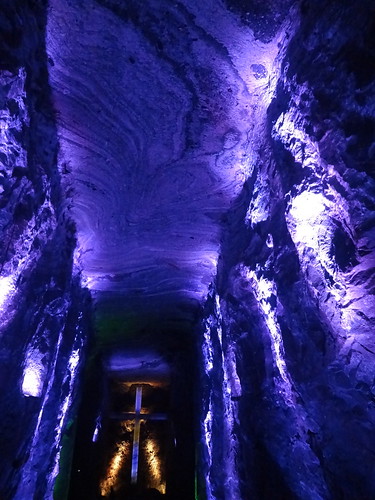 |
| the amazing roof of the cathedral de sal |
It's pretty creepy being 180 meters below the surface, with salt chafing your lungs, but services are regularly held here regardless.
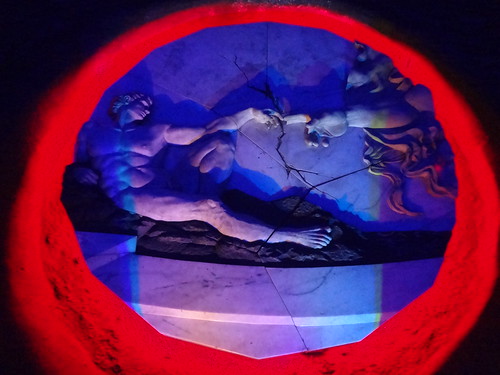 |
| God & Adam in the Catedral de Sal |
My tour was in spanish so I ended up wandering around by myself. Most of the depictions were pretty self-explanatory (see above) and it was nice to soak up the atmosphere without the constant whirr of cameras. I'm not sure I could have spent much longer than I did underground (about 90 minutes) but it was definitely worth the trip.
 |
| Plaza Mayor in Villa de Leyva |
Villa de Leyva is a picturesque colonial town about three hours north of Bogota. It was declared a national monument in 1954, so most of the architecture is perfectly preserved. The main square is big, one of the biggest in the country, but it swarms with tourists and tourist schlock. I found it much nicer to rent a horse and a guide for a couple of hours (at the very reasonable price of about $12 an hour) to get away from it all.
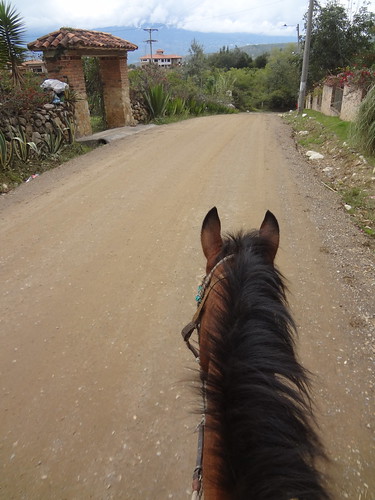 |
| Salta, my very patient horse, taking me out of Villa de Leyva |
I hadn't been on a horse for years, but in no time at all, I found myself cantering out to a local swimming hole, holding on for dear life. The Pozos Azules were deserted when we got there, and I hadn't brought my swimmies, but it was lovely to hop off the horse for a few minutes.
 |
| Pozos Azules |
Despite my saddle-soreness, riding through the town and the surrounding countryside was definitely the highlight of my trip to Villa de Leyva. My guide, Sebastian, was very friendly and informative. And very VERY young.
 |
| Me and my guide, Sebastian |
I guess child labor laws don't apply out here.
 |
| Plaza Bolivar, Tunja |
While I was originally planning to stay out in Villa de Leyva, I was very happy that I ACTUALLY stayed about half an hour away in the distinctly non touristy town of Tunja. It was pretty, and quiet, and the people at the hostel I stayed out, the
Hotel Casa Real, were lovely.
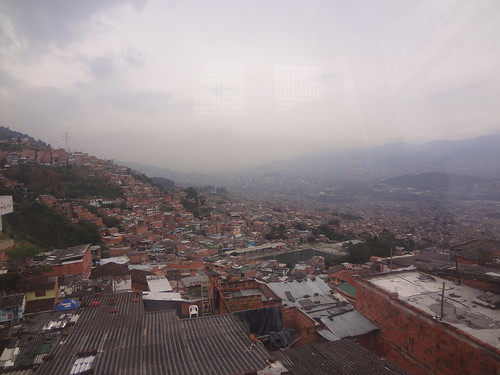 |
| Medellin |
My next stop? Medellin. As in the Medellin cocaine cartel. But if you didn't know your history, you would never guess that this was once one of the most dangerous cities in the world, with regular car bombings and motorbike-by shootings and everybody staying in at night. The streets throng with people and it feels as safe as anywhere I've been. There are museums, and parks and a lovely botanical garden. There's even a metro line that's a cable car. A freaking cable car.
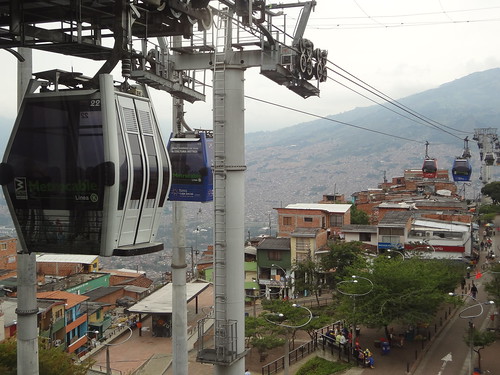 |
| one of Medellin's metro lines! |
That's not to say that the presence of the Medellin Cocaine Cartel leader, Pablo Escobar, isn't felt. Medellin's other famous son, artist Fernando Botero (he of the
fat people sculptures you can see in the Time Warner building in New York), has several paintings of Escobar's death, one of which currently hangs in the Museo de Antioquia in Medellin.
 |
| The Death of Pablo Escobar - Fernando Botero |
And you can, as I did, take a tour around Medellin to see some of the sights associated with Escobar. Including the rooftop that he died on (killed by police or CIA or paramilitaries or his own hand, depending on which of the rumors you believe), buildings that he used to own that were car-bombed and abandoned, and his grave. Tourists have apparently been known to do a line off his headstone as tribute.
 |
| the grave of Pablo Escobar (and company) |












yay fat people paintings. although something creeps me out about doing a line (in general & especially) off a dead cartel leader's tombstone. =)
ReplyDelete